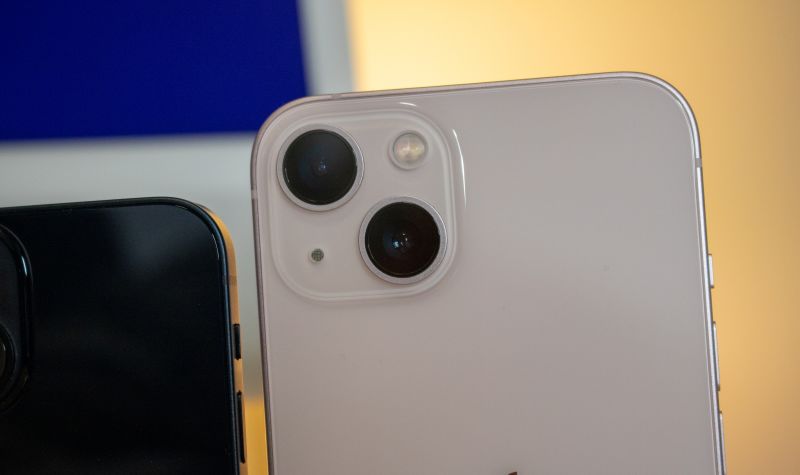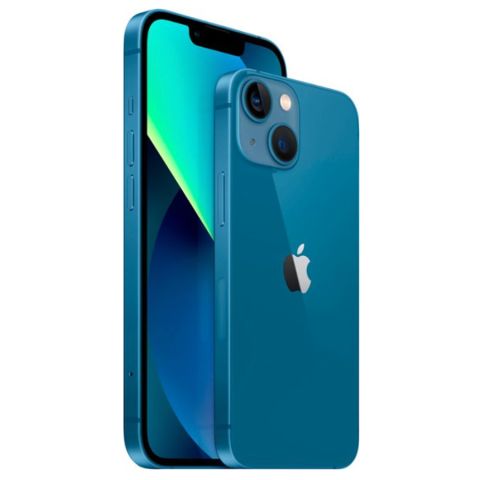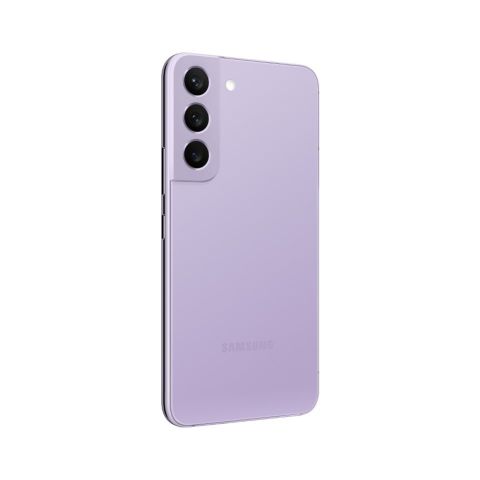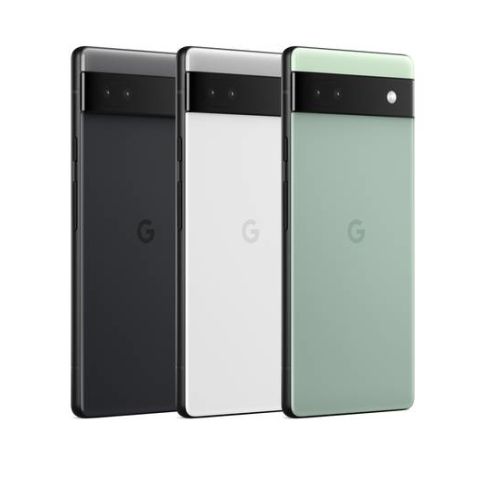Smartphones are at the center of our digital lives — they’re what we use to communicate with loved ones, handle important business, binge on TikToks and everything in between. And since you’ll likely use your phone more than any other gadget you own, picking the right one to last you through years of use is crucial.
But with new phones coming out seemingly every month, it can be hard to figure out which one is actually right for you. That’s why we’re always testing the latest flagships from the likes of Apple, Google, Samsung and more to make sure you get the best smartphone for your needs.
Best smartphone overall
Apple’s iPhone 13 has a modern build with an immersive display, with the best performance and one of the best cameras of all the phones we’ve ever tested.
With its latest slate of smartphones, Apple built on our previous overall winner, the iPhone 12, in all the right ways. The iPhone 13 boasts upgrades to the features we deem most important when it comes to choosing a smartphone — the display, processing power and camera capabilities.
When it comes to photo capturing, the iPhone 13 leads the class at this price point (for a nominal upgrade, you’ll need to spend more on the iPhone 13 Pro or Pro Max). The phone’s dual cameras — a 12-megapixel wide and a 12-megapixel ultrawide — along with Apple’s processing techniques work together to deliver a photo that works nine times out of 10. And that’s more dependable performance than any other phone — Galaxy S21 included — can deliver.
The critical improvement this year is in low-light performance, thanks to larger sensors that capture more light, so even photos taken in dim conditions appear brighter and offer minimal to no grain. Typically, a photo taken in low-light scenes introduces more noise and grain, which reduces the quality of a photo — a problem we found with most other smartphones’ cameras, but not with the iPhone 13.

The iPhone 13, equipped with Apple’s latest mobile processor, the A15 Bionic, also shone in performance, as FaceTime calls, browsing the web, posting on social media, playing games and even doing work all happened promptly and without hiccups. With large exports in Pixelmator, the iPhone was three to five seconds faster than iPhone 11, and an iMovie render of a 4K file was done about 10 seconds faster. Performance is on par with the Samsung Galaxy S21 across the board, though the iPhone was quicker with focusing, capturing and processing a photo or video.
Battery life is improved significantly over the iPhone 12. On a full charge, the iPhone 13 lasted for 14 hours and 15 minutes in our battery test, an hour and 45 minutes longer than the iPhone 12.
For those who either want to go smaller or spend less, the iPhone 13 Mini has the exact same feature set — and similar battery life — in a smaller housing with a 5.4-inch display for $699.
Best Android smartphone
If you prefer Android, the Galaxy S22 (or the larger S22+) are the way to go. These phones offer beautiful displays, long battery life, superb cameras and some of the best performance we’ve ever gotten out of a smartphone. Plus these phones look great, with a glass-and-metal build that comes in four attractive colors.
Best budget smartphone
If you’re looking to spend less than $500, it doesn’t get better than the Google Pixel 6a. This slick phone has the same speedy Google Tensor processor as the more expensive Pixel 6 and Pixel 6 Pro, delivers all-day battery life and gets you a clean Android experience with no annoying bloatware.
| Display |
6.1 inches, 2532 x 1170 Super Retina XDR |
6.1 inches, 2340 x 1080 AMOLED |
6.1 inches, 1080 x 2400 OLED |
|---|---|---|---|
| Refresh rate |
60Hz |
120Hz |
60Hz |
| Processor |
Apple A15 Bionic |
Snapdragon 8 Gen 1 |
Google Tensor |
| Memory |
4GB |
8GB |
6GB |
| Storage |
128GB / 256GB / 512GB |
128GB / 256GB |
128GB |
| Cameras |
12-megapixel wide and ultrawide cameras (back), 12-megapixel TrueDepth camera (front) |
50-megapixel wide, 12-megapixel ultrawide, 10-megapixel telephoto (back); 10-megapixel (front) |
12.2-megapixel wide camera, 12-megapixel ultrawide (back); 8-megapixel (front) |
| Size and weight |
5.78 x 2.82 x 0.3 inches, 6.14 ounces |
5.7 x 2.7 x 0.29 inches, 5.92 ounces |
6 x 2.6 x 0.35 inches, 6.3 ounces |
| Price |
$799 |
$849 |
$449 |
Foldable smartphones are picking up steam. It’s currently a niche market, but the folding future of phones is exciting. The new form factor allows for breakthroughs to happen in engineering and creates new experiences for us to use. A single device might be able to tackle your communication needs and be a tablet. From a lifestyle perspective, a compact device like the Z Flip can make your use of technology more intentional.
If we were to pick one right now, it would the Z Flip 3 5G. We’ve called it the best foldable on the market, and it’s relatively affordable, especially with a trade-in. It goes from compact with a tiny 1.1-inch screen to a large 6.7-inch screen when unfolded. It also launched at $999, which is still pricey but much cheaper than the $1,799 Galaxy Z Fold 3. The hinge feels great and has extra features to ensure debris or materials won’t get caught under the display. The phone features a dependable set of cameras, specifically a wide and ultrawide lens, with all of the modes you could want.
As you’d expect, when testing a smartphone, we physically switch over to that device for a period of time. It becomes our daily driver, with our SIM card inside, the apps we use and our contacts. That’s our real-world testing — using it for phone calls, texting with friends, capturing memories, playing games, chilling out with music, reading the news and taking in content.
Additionally, we pay close attention to four specific areas. When evaluating a phone’s build, we analyze and test the design. Does it feel good in the hand? Is it easy to hold, or is it a slippery mess? We also factor in what types of ports a phone has and, of course, check for a headphone jack. As phones have been getting larger and larger, size is taken into account.
Performance covers a lot — from the display to software and even connectivity, with more in between. To standardize the performance, we used benchmarks on each smartphone, and these are the same tests we run on devices in individual reviews. A proprietary battery test and Geekbench 5 are the callouts. With connectivity, we tested both cellular and Wi-Fi in a variety of situations.
With cameras, we tried to use them as you would. Capturing family at night and during the day, testing the all-important Portrait Modes and just general shooting. We shook our hands to test stabilization, tracked shutter times and saw how long it took to capture a photo.
Battery life was a category of its own to identify full run times, charging times and just how much use each phone could provide. The CNN Underscored battery test consists of a 4K video on a loop that runs until the device powers off. We ensure the brightness is set to 50% and turn off connectivity via airplane mode.
Our best budget iPhone pick, the iPhone SE delivers a whole lot for $429. You get the same powerful A15 Bionic processor found in the iPhone 13 series, as well as 5G support and a pretty good camera for the price. If you’re married to the Apple ecosystem and on a budget, it’s a no brainer. But for everyone else, we think the Pixel 6a’s superior cameras, design and battery life give it the edge.
If you have the money to spend and want an extra-large screen, an included stylus and the best camera on a Galaxy phone, the Galaxy S22 Ultra is a great option. However, we think the cheaper S22 and S22+ (which have the same fast processor and most of the same features) are the better pick for most people.
The OnePlus 10 Pro is a worthy alternative to the Galaxy S22 and Pixel 6 Pro, sporting a great display, an attractive design and especially fast charging speeds. However, its performance and cameras can’t quite keep up with our top picks.
As the smaller version of our overall pick, the iPhone 13 Mini merely shrinks the screen to 5.4 inches and packs a smaller battery inside. It still meets the same high performance marks and lasts a full day. If you want a smaller iPhone, this is the way to go. Unless you’re short on pocket space, we recommend the standard iPhone 13, as the extra screen real estate makes it more usable and the keyboard feels much less cramped.
At $200 more than the iPhone 13, the 13 Pro features an additional camera for close-ups and the ability to take macro shots, and it ups the refresh rate on the display to a standard 120Hz. If you’re really into photography, we think the jump is worth it for more details, colors and clarity in all shots captured on the device. Besides these improvements, it is identical to the iPhone 13, making Apple’s standard iPhone the better choice for most.
The iPhone 13 Pro Max is Apple’s largest phone with a 6.7-inch display. Like the 13 Pro, it features a high-refresh-rate display and a triple-camera system with LiDAR. If you’re using the phone as your primary camera, there’s a case to be made here especially for the improvements with clarity. And although it boasts the longest battery life among the new iPhones, unless you know you’d use the camera features, we’d still recommend the standard iPhone 13, as it performs just as well in everyday situations.
The iPhone 12 was our previous overall pick and a year later it’s still a good option. It boasts a dual camera main system with a 6.1-inch OLED screen that impresses with vibrancy.
The iPhone 12 and 12 Mini are identical except for the screen size, and that’s really good news. With a 5.42-inch screen, the iPhone 12 Mini is the compact phone with no compromises. It has the same camera setup as the 12, and that means terrific photos no matter the shooting conditions. It runs iOS 14 just as well and really is a great choice for people with smaller hands.
Like the Pro iPhone models, the S21 Ultra aims to level up the experience with a larger screen, truly high-end aluminum build and six cameras. Performance in our testing was really on par with the S21 as a whole. Yes, the device has more RAM, but unless running large exports or using the device for video editing, the base RAM in the S21 is just fine. The other boosts are in the camera department. The dual telephoto lens, however, which allows for 10x optical zoom, was a game changer in our testing. We were able to capture images from afar with a stunning amount of clarity for a smartphone; it’s a distinct improvement on the 3X optical zoom, plus software processing on the regular S21. If you don’t need to get those long shots, though, the standard Galaxy S21 is cheaper and nearly as feature-filled.
Arriving nine months after the original S20, the Galaxy S20 Fan Edition got almost everything right. A $699 mash-up of Samsung technologies held together in a polycarbonate plastic build, it delivers a triple-camera setup on the back with support for Space Zoom. It can take good photos and capture smooth video, but it takes a little more work than our best overall pick. The 6.5-inch Super AMOLED display on the front delivers a 120 Hz refresh rate. We wish all phones, including the iPhone 12, offered the faster refresh rate. Ultimately, though, the iPhone 12 is just $100 more, and the Pixel 4a 5G is much cheaper.
There’s a lot to like about the Galaxy Z Flip 3, from a smoother hinge that makes opening and closing more seamless to a larger cover screen that is finally more functional than gimmick. You can now actively see notifications, control playback and even monitor activity all from the front screen. The main internal display is bigger than the S21’s (it is closer in size to Samsung’s larger S21+) with a 6.7-inch display that features a high refresh rate. And it’s powered by the same processor as the Galaxy S21 along with the same wide and ultrawide lenses. That said, we still don’t see a compelling argument for a folding phone yet, but if you’re sold on the folding future, we’d recommend this one for it’s S21-like feature set.
Samsung’s latest combination phone and tablet is really impressive — it’s also $1,799, which is a ton to pay for a phone. The software experience here is more desktop-like, with solutions for multitasking with any application, and the Z Fold 3 adds high-refresh-rate displays, a faster processor and a considerable improvement in the overall build. Opting for a Galaxy Z Fold 3 lets you do more with just one device, but there are some limitations with Android. There are also long-term durability concerns with a foldable. Unless you’re an early adopter, opt for a standard non-folding smartphone.
The first Pixel of 2020 struck a really nice chord. At $349, it delivers a really solid experience with an OLED screen, a fingerprint sensor on the back and one camera lens on the back. It’s a great 4G LTE-capable phone for its price, but in 2020 we’re also focused on longevity, and for a little bit more the Pixel 4a 5G gets you a more future-proof device.
The Pixel 5, at just $699, is the high-end Pixel for 2020. But it doesn’t really impress more than the Pixel 4a 5G — it has a slightly more refined design and supports reverse wireless charging. Unless you’re a Pixel die-hard who wants a fun color, the differences are minimal and the 4a 5G is the way to go.
Motorola’s reentry into the flagship space was a mixed one. The more expensive Edge+ is a Verizon exclusive, and that’s just no fun. The Motorola Edge is a modest flagship with a display that stretches to the very edge (get the name now?), literally spanning the right and left sides. It didn’t add much actual use cases, though, and at $699 it fell to our then budget pick in the Pixel 4a 5G. However, now that it’s dropping below $300 during sales, it’s a worthy option for those on a tight budget.
Our experience with the first generation of the Razr was nostalgia-fueled but ultimately not a good foldable experience. The second gen keeps the iconic design and a hinge that you can physically feel. But the fact that it feels more durable doesn’t get away from feeling the display fold and hearing it creak. We do like the larger display on the front over that of the tiny one on the Z Flip, though. And Motorola making it available unlocked, instead of locked to Verizon, is a great move.
OnePlus is known for providing flagship specs and features at a price that undercuts its competitors, and the $749 OnePlus 8T is no different. It includes the latest Qualcomm processor, the Snapdragon 865, 5G connectivity, a big battery and four rear-facing cameras, including a macro lens for those photos where you need to get really close to your subject. All OnePlus phones are powered by Android and run OnePlus’ proprietary Oxygen OS on top of it. The 6.55-inch display even has a 120 Hz refresh rate, but ultimately the OnePlus 8T fell short from one of our top picks due to unreliable camera performance. Oh, and the fact that Samsung undercut OnePlus by releasing the Galaxy S20 FE that nearly matches its specs but costs $50 less.
The OnePlus 8 Pro was released in early 2020 and remains in the OnePlus lineup as a higher-end option for OnePlus fans. It’s normally priced at $899, which is uncharted territory for a company known for its low-end prices on high-end phones. We reviewed the 8 Pro shortly after it launched and found it to be a fantastic Android phone, with a stellar display and strong performance with long-lasting battery life. The unlocked OnePlus 8 Pro lacks support for mmWave 5G networks, certain to be a drawback for some. The cameras are good but not on the same level as the iPhone 12, and at this price it needs to be as good or better to get a top pick.
Microsoft’s reentry into the smartphone space was a unique one. The $1,299 Surface Duo doesn’t have a folding screen, but rather two separate screens that are connected by a stellar hinge. The design purposely doesn’t feature any screen on the front, and it’s meant to help you use your phone with intention. And while the hardware is good, the software experience left us wanting a lot more. Android as a whole isn’t ready for the two-screen revolution, and it was really buggy when it came to sending applications to the proper sides of the display. Still, we have high hopes for version two.
Read more from CNN Underscored’s hands-on testing:




